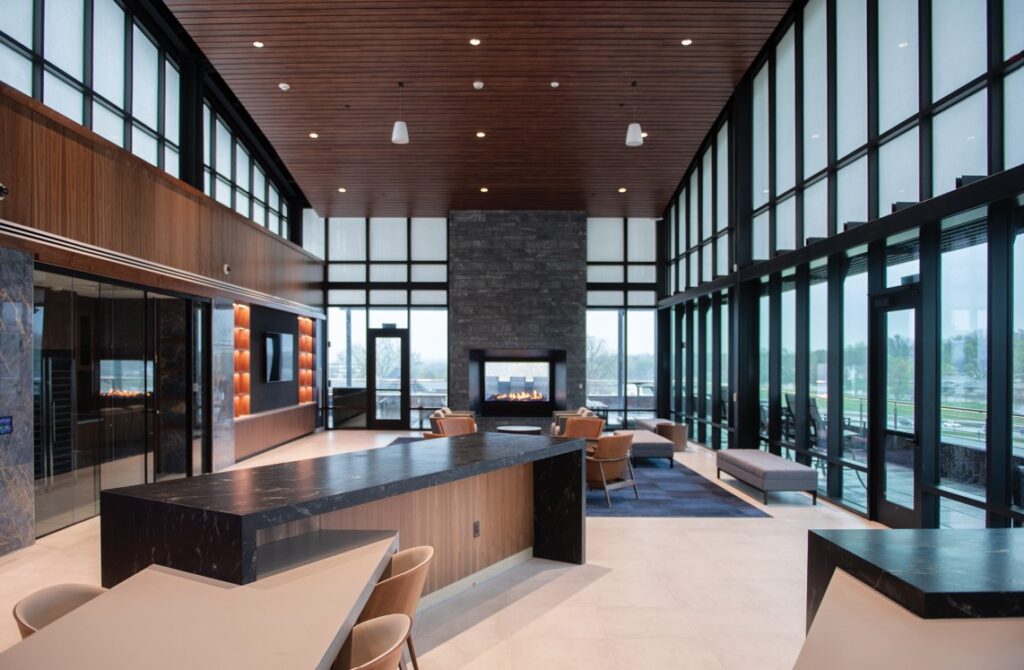A pulse on Iowa’s entrepreneurial ecosystem
Top themes from innovationIOWA panel discussion

Sarah Diehn Aug 25, 2023 | 6:00 am
6 min read time
1,427 wordsAll Latest News, Business Record Insider, Innovation and EntrepreneurshipDuring the recent innovationIOWA panel discussion, panelists provided a pulse on Iowa’s entrepreneurial ecosystem, saying the state is in a healthy position with opportunities to double down and continue growing.
Panelists:
- Eric Engelmann, general partner, ISA Ventures
- Nancy Mwirotsi, founder and executive director, Pi515
- Lisa Shimkat, state director, America’s SBDC – Iowa
- Ellen Willadsen, chief innovation officer/executive sponsor, Holmes Murphy/BrokerTech Ventures
- Diana Wright, startup community builder, Greater Des Moines Partnership
Summarized below are some of the top themes from the panel.
Building Iowa’s momentum and growth
Wright likened the concept of an entrepreneurial ecosystem to a garden with a foundation of soil, entrepreneurs as the seeds, and water and gardeners supporting the growth. She said she has learned through the MIT Regional Entrepreneurship Acceleration Program (REAP) that Iowa has “really rich soil for entrepreneurs,” but continuing that success means keeping up the momentum that is already built and supporting the addition of new entrepreneurs.
Mwirotsi, who is also participating in the Central Iowa MIT REAP initiative, said the experience has revealed what Central Iowa is doing “right” and that there are nuances between Des Moines’ and Ames’ ecosystems, like the resources available in Ames due to the presence of Iowa State University. In both communities, she said, everyone will need to work together to address the need to “upskill a lot of people.”
“I think we have a challenge on our hands, but it’s one we’re taking on boldly because we know we have capacity to do that,” Mwirotsi said.
Shimkat said working in a “semi-government” organization like the Small Business Development Center can lead to more reactionary innovation, making changes to fit the environment and new circumstances. In the last decade, she said, the SBDC has sought ways to be proactive, including starting the Rural Business Innovators program, which aims to bring business development resources to early-stage entrepreneurs in rural areas.
With a solid foundation laid, Wright said she and other stakeholders are setting a goal to “think 10 times and bigger,” by pursuing ideas like creating a $100 million venture fund focused on agtech.
“I think with MIT, it’s helped us realize, when we do look at all the assets in the community, what can we just dial in and just turn up a little bit that will make things easier?”
Entrepreneur and risk capital challenges
Willadsen and Engelmann said changes to the investment environment in the last year have resulted in investors giving startups competing expectations to meet.
“So many of them entered their venture with the mindset of ‘grow, grow, grow,’ and that was all around top-line growth,” Willadsen said. “Now they’re hearing ‘OK, now we don’t care so much about growth, where’s your bottom line?’ and that’s a very difficult business model to switch on a dime.”
“They’re responding to investors, which is weird, like that’s what’s driving that behavior,” Engelmann said. “I think Iowa is a little gentler and less oscillating in that we’re a little more on [the side of], ‘It’d be really cool to be profitable’ … but it is changing. But I feel like Iowa has maybe not had quite as much on-the-edge behavior.”
Willadsen said the shift offers Iowa and the Midwest region an opening to provide stability.
“We’ve had many startups who have either delayed funding or are hoping to wait this period out, and I think that that’s a great opportunity for Iowa,” Willadsen said. “We hear a lot about East Coast money and West Coast money and how they differ in that. And Iowa and the Midwest actually have an opportunity to create Midwest money that might be a little less reactionary, a little bit more supportive, in many ways.”
The investor and entrepreneur activity are areas Iowa can continue to grow, panelists said.
Engelmann said entrepreneurs need to have as many opportunities to get in front of investors as possible, because investors and venture firms are considering the company’s stage and industry as well as external factors like if it’s the “right time in the fund’s history” to invest.
“The filter is layers of Swiss cheese you have to jump through. The odds of getting through are pretty low for most entrepreneurs, so more investor opportunities and different investors focusing on different sectors would be a huge advantage.”
Engelmann said ISA Ventures realizes it’s not the right investor for every company, and like other Iowa venture firms, works to build connections with investors out of state, including through events like EntreFEST.
Wright said Iowa has a lower rate of new entrepreneurs, measured as the percentage of the population starting new businesses, compared with the nation and other Midwest states. Something that addresses this challenge is new startups spinning up companies that scaled, including Dwolla, Workiva and Roboflow.
“When you’re at a startup, you are taking a risk, and you don’t know necessarily the pathway of where that business is going to go, but those people really do start to kind of multiply when we’re thinking about how do we grow more entrepreneurs,” Wright said.
Creating education-to-employment pathways
Workforce attraction and retention needs persist, and Shimkat said rather than putting out singular programs, Iowa should focus on comprehensive pathways that extend from education to employment.
“Why don’t we look at a model that helps folks into the college sector to get some of that education that maybe is outside of the traditional paths that we look at, and figure out then how we can get to the next step to get them into your companies?” she said. “I think just having different people at the table is a start.”
Shimkat said telling the story of being an entrepreneur to students is also necessary because they need to know the steps to get there.
“It’s about that path to get to be a part of that business. ‘How can I do that? How can that door open for me? And what do I need to do to get in that door? Is it a piece of paper? Is it an understanding of the industry?” she said. “[By] teaching people ‘Here’s how it can happen,’ I think that will open up a lot of doors, and it will get us thinking differently about addressing some of those workforce solutions.”
Mwirotsi said the journey starts with education and K-12 schools, so challenges early on can have effects on the community down the line. In Des Moines, she said, there is a chronic absenteeism issue and the rate is higher among Black students.
“If there’s ever been a moment to care, I think this is the moment to care and double down and to think about who you’re going to hire, do they have the skills, because if kids are not going to school, then we do know we have a problem,” Mwirotsi said.
Mwirotsi encouraged a focus on work-based learning and employers welcoming students in their spaces to help them connect to their next steps in education or employment. For example, Pi515’s Tech Mentorship Program has been hosted and facilitated by Principal Financial Group and John Deere.
Finding opportunities through others
Panelists shared that future opportunities for innovation in Iowa depend on learning from others in one way or another.
“Everybody’s getting better, creating new programs, new ways to invest, new ways to retain and train new talent and build new talent pipelines, and Iowa’s getting better too,” Engelmann said. “The problem is we’re maybe not getting better as fast as we all want to, so frankly, we need to go out and steal ideas from elsewhere.”
He highlighted one effort by the business consulting firm High Alpha to streamline entrepreneurs’ access to investors and other resources to help grow their business so they don’t have to go down several different pathways to find support. Willadsen said BrokerTech Ventures could have primarily focused on providing capital, but several of the partners stepped back and saw how an accelerator could bring value to entrepreneurs and the ecosystem as a whole.
Wright said working with other Midwest regions in the MIT REAP cohort has shown her that collaboration and leaning on each other’s strengths is a benefit for Iowa because it can expose entrepreneurs to important partnerships and connections.
Collaboration between Iowa stakeholders is necessary as well, she said.
“In corporations or existing businesses, they talk about how can we include startups as part of our journey. And honestly, the first thing is invite the entrepreneur to the room and to be part of that. And the same thing goes for all the other stakeholder groups.”

Sarah Diehn
Sarah Diehn is digital news editor and a staff writer at Business Record. She covers innovation and entrepreneurship, manufacturing, insurance, and energy.









